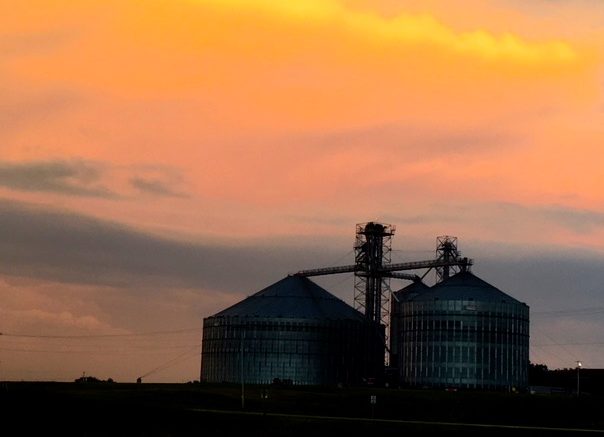
HuffPost (8/12/19)
American farmers are attacking President Donald Trump in the wake of a new hit from China, which comes as part of the lingering trade war between the countries.
Trump’s “strategy of constant escalation and antagonism” has worsened the situation, Roger Johnson, the president of the National Farmers Union, the nation’s second-largest general farmers group, told Bloomberg. Family farmers and ranchers “can’t withstand this kind of pressure much longer,” he added.
“It’s really, really getting bad out here,” Bob Kuylen, a North Dakota farmer of 35 years, told CNBC. “Trump is ruining our markets.”
China canceled all purchases of U.S. agricultural products last weekend. The retaliatory action came after Trump announced 10% tariffs on an additional $300 billion of Chinese imports set to begin in September.
China’s move is a “body blow to thousands of farmers and ranchers who are already struggling to get by,” Zippy Duvall, president of the American Farm Bureau Federation, told Bloomberg.
American agricultural exports to China dropped by half last year due to Trump’s trade war, and farm income fell 16%, Time reports. And over the last five years, net farm income has plunged by nearly half, from $123.4 billion in 2013 to $63 billion last year. …
Read the Rest and 2-Minute Video
(Commoner Call photo by Mark L. Taylor, 2019. Open source and free for non-derivative use with link to www.thecommonercall.org )
*****
Regenerative Agriculture Is Key For A Survivable, Sustainable Climate & Food System
Soil, Not Oil!
By Kristin Ohlson
Yes! Magazine (8/10/19)
From where I stand inside the South Dakota cornfield I was visiting with entomologist and former USDA scientist Jonathan Lundgren, all the human-inflicted traumas to Earth seem far away. It isn’t just that the corn is as high as an elephant’s eye—are people singing that song again?—but that the field burgeons and buzzes and chirps with all sorts of other life, too.
Instead of the sunbaked, bare lanes between cornstalks that are typical of conventional agriculture, these lanes sprout an assortment of cover crops. These are plants that save soil from wind and water erosion, reduce the evaporation of soil moisture, and attract beneficial insects and birds. Like all plants, these cover crops convert atmospheric carbon dioxide into a liquid carbon food, some for themselves and some to support the fungi, bacteria, and other microscopic partners underground. A portion of that carbon stays there, turning poor soil into fragrant, fertile stuff that resembles chocolate cake.
“We should encourage the policy makers that this process of restoring degraded soils and ecosystems is a win, win, win option. It’s a bridge to the future.”
The field rustles with larger life forms, too. Lundgren was visiting this particular field to meet up with a group of his grad students splayed among the plants, sucking insects into plastic tubes to be later identified and counted. Lundgren launched a research institute called Ecdysis back in 2016 to conduct comparative studies between conventional agriculture and regenerative agriculture, which is generally defined as agriculture that builds soil health and overall biodiversity and yields a nutritious and profitable farm product. Regenerative farmers avoid tilling so that they protect the community of soil microorganisms, the water-storing pores they create underground, and the carbon they’ve stashed there. They encourage plant diversity and plant cover that mimics nature in their fields, avoid farm chemicals, and let farm animals polish off the crop residue.
All of us are familiar with conventional agriculture: the miles upon miles of farmland growing only one crop, the destructive tillage that wafts soil and its stored carbon into the air and into our waterways; the use of hundreds of chemicals including pesticides like chlorpyrifos that have been found to cause brain damage in children; the confined facilities that are both cruel to animals and make their impact on the Earth an assault rather than a gift.
This is the kind of agriculture targeted in the most recent report, released Aug. 8, from the Intergovernmental Panel on Climate Change, in which a panel of 100 scientists concur not only that the food system contributes 37 percent of greenhouse gases, but also that a more sustainable agriculture can help address global warming.
Agriculture that can turn this mess around
Reading through the report, I can’t help but wonder whether any of those 100 scientists have visited the kind of agriculture that can turn this mess around or whether they’ve just read about it in studies. Whether they’ve ever smelled the soil that comes from these farms or seen the incredible variety of birds and insects thriving alongside the crops. Whether they’ve ever talked to the farmers who are discovering how to grow healthy food and healthy landscapes at the same time.
I first started writing about those farmers back in 2011, when there were more amazing anecdotes than studies, but that has changed. Lundgren himself published a study with his former student Claire LaCanne in 2018. The study followed 10 cornfields per farm on 20 farms over two growing seasons, half of which were regenerative and half conventional. The study tracked soil carbon, insect pests, corn yield, and profits.
The results give the imprimatur of science to the successes regenerative farmers have reported for years. …

